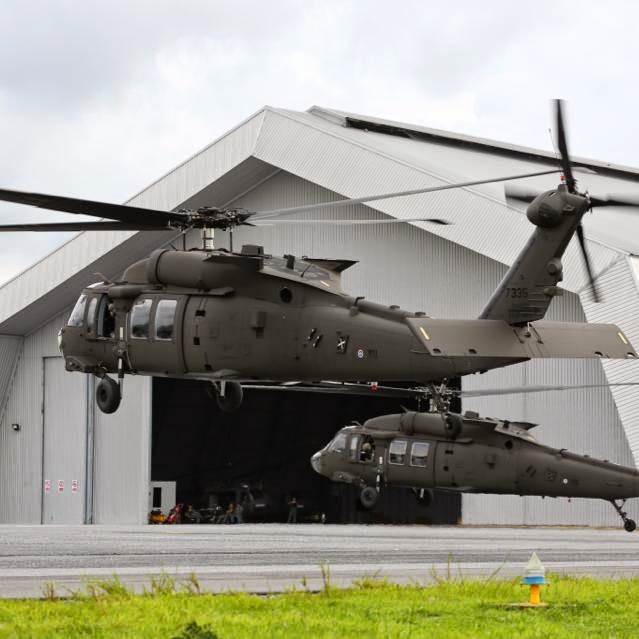Navigating Success: UH 60 Helicopter Upkeep Ideal Practices
Navigating Success: UH 60 Helicopter Upkeep Ideal Practices
Blog Article
Navigating Uh 60 Helicopter Laws and Compliance Demands

Regulatory Structure Introduction
The regulative structure regulating UH-60 helicopter operations encompasses a complex collection of requirements and guidelines established by aviation authorities. These policies are developed to guarantee the effective and risk-free operation of UH-60 helicopters in numerous atmospheres. The Federal Air Travel Administration (FAA) plays a main duty in developing and imposing these regulations, which cover a wide variety of operational elements, including airworthiness criteria, pilot certifications, maintenance needs, and operational treatments.
Conformity with these laws is crucial for helicopter drivers to keep the highest degree of safety and security and functional stability. Failure to comply with these policies can cause severe consequences, consisting of accidents, injuries, and regulative sanctions. Therefore, helicopter drivers should remain informed regarding the current regulative developments and make sure that their procedures are in complete compliance with all suitable rules and requirements.
Airworthiness Inspections and directives
Among the regulatory framework governing UH-60 helicopter operations, a vital focus pushes compliance with Airworthiness Directives and carrying out thorough inspections to support security standards and operational reliability. Airworthiness Directives (Advertisements) are released by aeronautics authorities to resolve harmful problems in airplane, consisting of the UH-60 helicopter, and mandate particular actions to be taken by operators or owners. Compliance with ADs is required, and failing to follow these regulations can result in serious consequences, consisting of grounding of the aircraft.
Routine inspections are extremely important to guaranteeing the airworthiness of UH-60 helicopters. By sticking to a strict assessment regimen, drivers can detect and attend to potential problems promptly, consequently boosting the safety and dependability of UH-60 helicopter procedures.
Pilot Qualifications and Training

Pilot training for UH-60 helicopters is extensive and covers a variety of subjects, including airplane systems, emergency treatments, navigation, and mission-specific training. In addition, pilots undergo simulator training to exercise various emergency situation scenarios in a regulated environment. This training assists pilots develop the needed abilities to deal with tough situations successfully.


Furthermore, ongoing training and specialist growth are necessary for UH-60 pilots to remain present with the newest policies, technology, and ideal methods. By buying pilot qualifications and training, operators can enhance safety and security, enhance performance, and ensure conformity with regulative requirements in the procedure of UH-60 helicopters.
Operational Limitations and Requirements
Pilot credentials and training act as the foundation for comprehending the functional limitations and requirements related to UH-60 helicopter procedures (uh 60). These operational restrictions are implemented to make this page certain the security of the staff, guests, and the aircraft itself. Functional limitations might include variables such as weather, weight limitations, altitude restrictions, and operational limits. It is vital for pilots to be well-versed in these restrictions to make informed choices during flight procedures. Furthermore, conformity requirements, such as sticking to specific flight courses, interaction protocols, and emergency situation procedures, are necessary for maintaining operational safety and security and regulatory conformity. Pilots have to stay present with all functional limitations and requirements via routine training, instructions, and reviews to reduce dangers and ensure risk-free and efficient UH-60 helicopter procedures. By focusing on adherence to these functional guidelines, pilots can enhance the general safety and security and effectiveness of their missions while maintaining governing standards.
Emergency Procedures and Conformity Screening
Reliable emergency situation procedures and detailed conformity screening are important elements of preserving operational safety and governing adherence in UH-60 helicopter procedures. Emergency procedures encompass methods for different situations, including engine failures, fires, hydraulic concerns, and a lot more. Pilots and team members have to be fluent in these treatments to react promptly and properly in emergencies. Regular conformity testing guarantees that the helicopter meets all governing demands stated by aeronautics authorities. This testing involves detailed examinations, checks, and assessments to confirm that the airplane is airworthy and in compliance with all relevant guidelines.
Conformity testing likewise includes devices onboard the UH-60, such as interaction systems, navigation tools, and safety and security gear. Making certain that all devices is operating properly and fulfills regulatory requirements is crucial for safe procedures. In addition, compliance testing might entail simulations of emergency situations to analyze the team's feedback and the helicopter's performance under tension. By focusing on emergency situation procedures and compliance screening, UH-60 drivers can alleviate risks and show their commitment to security and governing compliance.
Final Thought
To conclude, adherence to governing structure, conformity with airworthiness instructions, pilot credentials and training, functional constraints, and emergency situation treatments are essential for browsing the laws and needs of running a UH-60 helicopter. uh 60. check my source It is vital for drivers to focus on security and guarantee full compliance with all applicable laws to keep the airworthiness go now and functional stability of the aircraft
Navigating the regulatory landscape bordering UH-60 helicopter procedures demands a nuanced understanding of the elaborate web of rules and conformity demands.Compliance with these regulations is essential for helicopter drivers to preserve the greatest levels of safety and functional stability.Amidst the governing structure regulating UH-60 helicopter procedures, a critical emphasis lies on compliance with Airworthiness Directives and performing complete evaluations to support safety criteria and operational integrity.Efficient emergency treatments and extensive compliance screening are crucial parts of preserving operational security and regulatory adherence in UH-60 helicopter operations. Routine compliance testing makes certain that the helicopter satisfies all governing needs established forth by aviation authorities.
Report this page